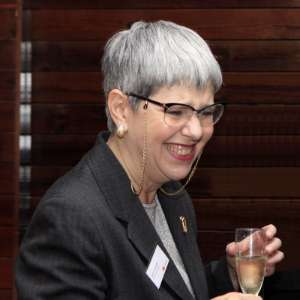The year 2020 should have marked the 75th anniversary season of the Zurich Chamber Orchestra, founded by Edmond de Stoutz in 1945. In these difficult times, the opening may have also marked the closure of the 2020/21 season, given the restrictions on public gatherings enforced in Switzerland the very next day: all the remaining concerts this autumn have sadly already been cancelled. We can only hope this closure is temporary.
The programme presented was varied, with works spanning a vast range of musical epochs; it started with Handel’s Concerto Grosso in D major, Op.6 no.5, the very same that was performed in its first public concert in 1945. Renowned violinist Daniel Hope, at the head of the orchestra since 2016, led the ensemble in an emotional reading of the score, with careful dynamics and fast tempi, doing justice to Handel’s amazing music.
The concert continued with the exploration of German early Baroque, with two cantatas by Franz Tunder and Julius Johann Weiland. Tunder (1614-67) was one of the composers who established the chorale cantata in the German tradition, a musical form which would reach its pinnacle with the work of J.S. Bach in the following 100 years. The cantata Wachet auf, ruft uns die Stimme features the same melody used in Bach’s cantata setting of the same text. Tunder’s score, for soprano and orchestra, presents all the typical stylistic devices of the chorale cantata, in a simple, at time perhaps basic form, but perfectly recognisable as a precursor of the great works to follow in this tradition. Weiland (1605-63) worked at the court of Brunswick-Wolffenbüttel, near Hannover, and is considered a minor composer of the early German Baroque, his works rarely performed or recorded. This made his cantata Jauchzet Gott, alle Lande a very welcome addition to the programme, which gave us the opportunity to get acquainted with an interesting work by a nearly unknown artist.
Both cantatas, each only a few minutes of music, were sung by Emőke Baráth, who made an impression with her silvery, very high soprano. Her voice, very easy on the high notes, had nevertheless a fullness, a velvety roundness usually associated with lower Fachs, which gave emotional intensity to her interpretation. The orchestra, led by concertmaster Willi Zimmermann in these two pieces, supported Baráth with elegance; particularly noticeable was Naoki Kitaya at the cembalo, with original and inspired variations.
The second part of the programme featured Romantic and 20th-century music. Felix Mendelssohn was around 13 years old when he wrote his String Symphony no. 7 in D minor, a tribute to symphonies of the past. Influences from Haydn and Mozart are obvious throughout, but Mendelssohn’s own language is already recognisable in its infancy, in the intense contrapuntal approach of the opening and closing movements, or the dramatic Menuetto of the third. The second movement (Andante amorevole) gave Hope a chance to treat us with some ravishing pianissimi in an emotional, intimate performance.
Mieczysław Weinberg (1809-1996) was a Polish-Soviet composer strongly influenced by his life-long friend Shostakovich. Hope and the Zurich Chamber Orchestra performed his Concertino for violin and string orchestra with a remarkable sense of ensemble, a beautiful legato, and great intensity. Overall, the orchestra seemed more at ease in this part of the concert than in the Baroque pieces of the first half, both from an interpretation point of view and also stylistically.
As a generous encore, a furioso piece by Vivaldi was chosen: the third movement from Vivaldi’s Concerto for 2 violins, cello and strings in A minor, RVV522 from L'estro armonico, performed at breakneck speed, with Hope and Zimmermann as soloists. It was a perfect showcase for the two soloists’ virtuosity; if the speed was decidedly over the top, the performance was exciting and bursting with joy.


